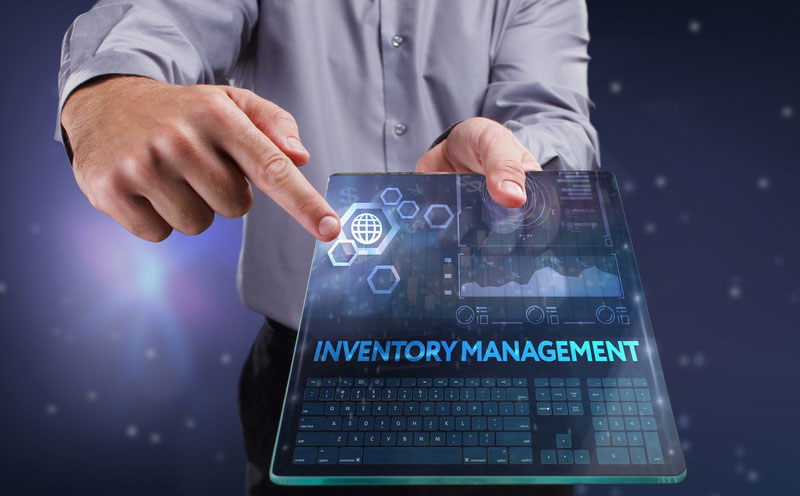Small businesses (retail businesses) rely heavily on paper to run their day-to-day processes, whether in offices or retail storefronts. Paper documents can take up a significant amount of space, can be damaged by flood, cyclone, bushfire or other extreme weather event and are rather expensive to manage. Many companies find the support of document scanning companies invaluable when it comes to scanning and converting paper documents into electronic format. This helps save time, cost, and space, boost productivity, makes electronic documentation and information sharing easier as well as minimizes environmental damage.

Inventory is one of the most important aspects of retail business. However, it is one of the most difficult things to track. Sales, returns, new receipts and breakages affect your stock levels every day. Inventory management can solve this issue. Inventory management software can track inventory levels, orders, sales and deliveries. This tool can organize inventory data that is generally stored in hard-copy form or in spreadsheets. Good inventory software helps enhance efficiency, improves coordination and cut down expenses. You should take the following factors into consideration while choosing the inventory software for your business.
- Cost of the Software – With the introduction of cloud-based software, inventory software has become more affordable than ever. In fact, not all the inventory software will offer the same features. So you need to consider the features that are most important to your business. Understanding the needs of your business is important as features and functionality strongly correlate with cost. For example, if you need a simple program for tracking product stock levels and cost of goods sold, it may only cost you a few dollars a day. If you need software with more advanced features like supply chain management or warehouse management, then your solution could cost a few hundred dollars a month.
- Ease of Use – The usability of software also plays an important role. You should think about how easy the software is going to be to use. For that, take advantage of a free trial, when you get the chance. This will allow you to know how easy it is to use a certain software suite. If you are not impressed by the end of the trial, then you can change the software and consider using another form of software. If the software doesn’t offer a free trial, then try using the most basic form of the software for a period of one month. This will give you enough opportunity to see how it works. It is also necessary to keep employees in mind. You should ensure that the software you choose is easy for your employees to learn what needs to be done. In contrast to this, if it takes your staff hours upon hours to learn the basic operational procedures and inventory controls, then it is not worth your time. Every time you hire a new employee, you have to spend hours training each and every one of them. So you should ensure that the software you choose is easy for you to teach them how they should go about using the software. Lastly, if you find it very difficult to navigate the system’S back-office in order to find purchase order data or reorder triggers to manage order fulfillment, then you should consider more user-friendly software. If the learning curve is too high for you and your employees, it will cost you a lot of time, energy and money which can have a negative impact on your business success in the long run.
- Choose a Reliable Provider – You should ensure that the company you choose to partner with is dedicated to providing the software you have invested in. If the company is just trying to copy someone else and make money quickly and without effort, then this may create issues for you. If the company ever terminates its operations, then you end up with software that is not going to be updated, which could create security risks. To avoid this, consider how long they have already been in business, talk to other small or mid-sized business owners and find out their opinion of the solution and also check out popular review websites.
- Data Analytics – Data plays a huge role in understanding business performance and customer habits. When there is data related to the inventory management side of your business, it will be easier to see what is going on in your business and you can later turn this information into actionable steps. For example, when you were going to order some more products, you might have noticed that a certain product is consistently in stock. So, to sell more of this product you need to take certain steps like introducing a discount to get rid of this stock. Once you have done so, you can consider sourcing a new product to takes its place. You can gather these insights manually; however, it is not easy. With a suitable inventory management system, it can be made a lot easier. It is essential that inventory management software presents the information in neatly organized reports for the user. Nearly all inventory management software will have pre-defined reports that offer the key metrics you need. Others will give you the ability to drill down and customize reports to see unique insights that are important to your business. Depending on your industry, you must choose inventory management software that can partially or entirely automate the process of ordering new supplies.
- Integrations – Ensuring that the inventory management software integrates with your other systems helps remove the need for you to have to complete manual data entry tasks. According to a survey of Intuit (QuickBooks), 68 percent of small businesses use an average of 4 apps to solve everyday problems and make their business more efficient. If one or more of these apps can talk to another through integration, then it will help you save more time. The following are a few common integrations to consider. These include:
- Ecommerce – If you are selling your goods online, you will need an online inventory management system to track your digital inventory. Merging your physical and digital world helps track sales, stock level, and orders between your website and inventory software.
- Shipping – A shipping app will be a huge timesaver, when your online sales take off and are expanding into online marketplaces like Amazon or eBay. It is possible to automate almost all steps of the shipping process with presets and automation rules.
- Accounting – 46 percent of small business owners say that administrative tasks like bookkeeping are one of their major roadblocks in achieving a positive work-life balance. However, automating the process helps eliminate the need for spending hours dwelling over spreadsheets and accounting details.
- Multiple locations – You may need to have one centralized tool to help manage inventory when you have multiple store locations or are planning to open new storefronts. It is crucial to ensure that the solutions you invest in are capable of supporting your potentially expanding business.
Similarly, there are a lot of things to consider when choosing a document scanning company to outsource the document scanning tasks. The right document scanning service provider can help businesses reduce cost, maximize office space, ensure better data security, increase customer satisfaction and enable employees to focus on their core business tasks.



